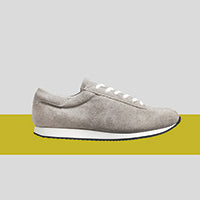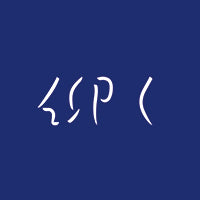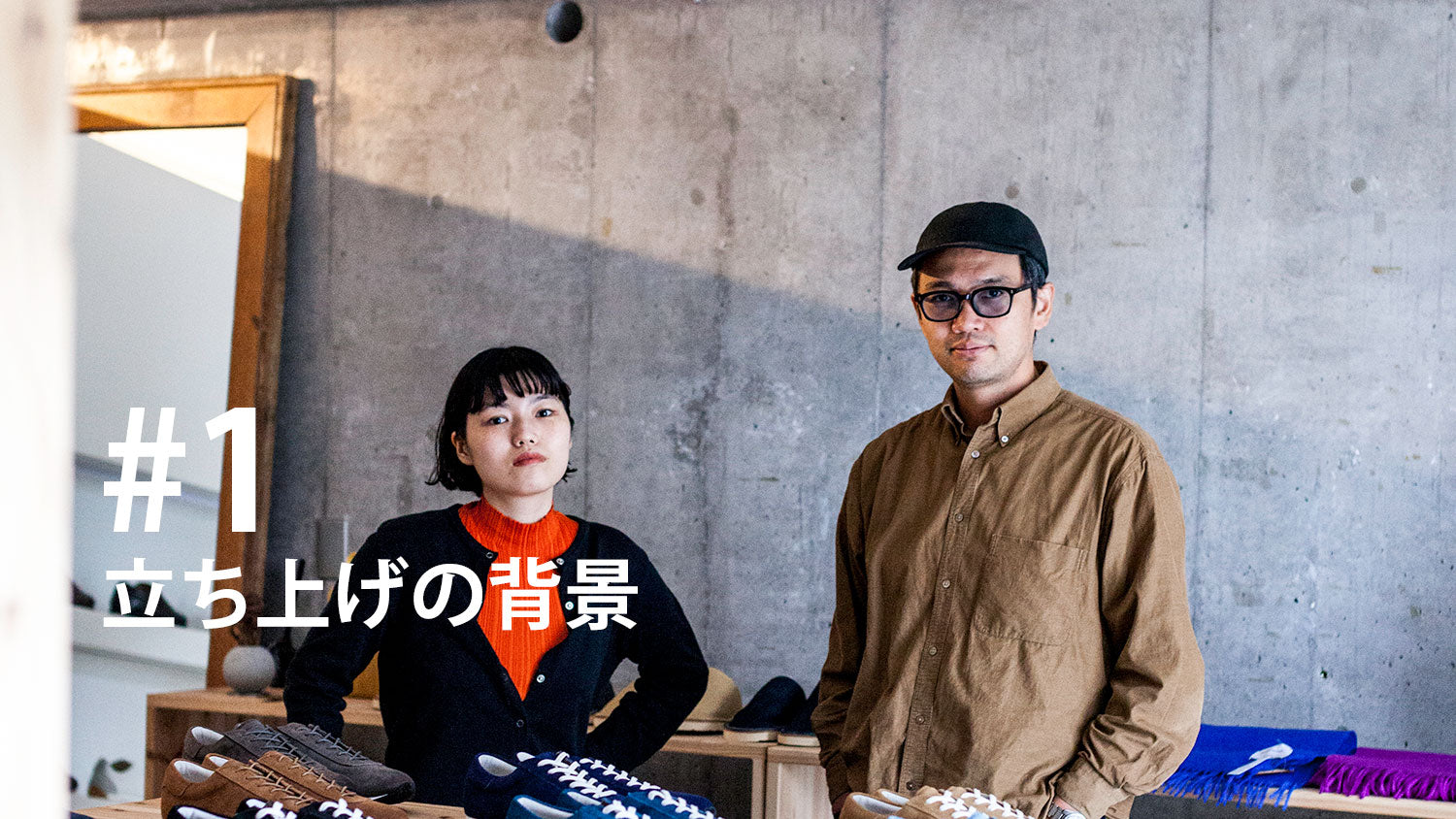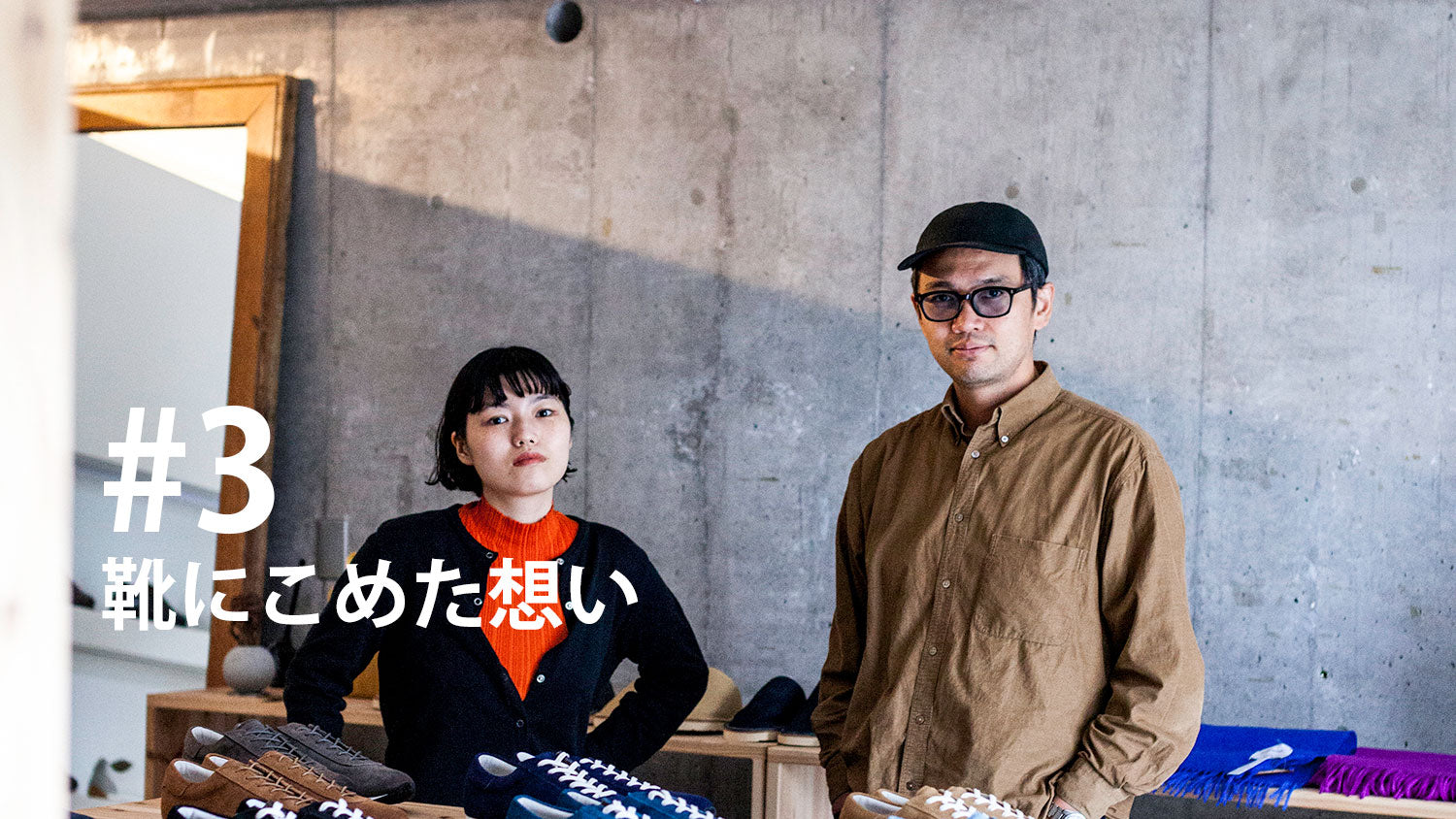Concept Deep Interview #02|Empathy with Mingei
Celebrating its 10th anniversary, Blue Over has updated its concept statement. The new statement includes the brand's background, its approach to craftsmanship, and the thoughts it wants to share with its wearers.
[Full concept]
The concept is quite long, over 2500 characters, but some parts have been cut down to make it easier to read. In this article, Blue Over's designer Watari and brand staff member Egawa, who wrote the article, will thoroughly explore the content.
Profile
Watari
He is the founder and designer of Blueover. His hobby is wood carving. His favorite car is the first generation Honda City E-AA.
Egawa
A staff member at Blue Over/Struct. She enjoys handicrafts on her days off. She is happy when she can use the things she makes right away.
#01Background to launch
We have been reading in detail about "The origins of Blue Over" and "The background of shoemaking" in Egawa's concept text, but this time we will look at the next point, "The influence of the Mingei movement."
Watari
thank you
Influence of the Mingei Movement
In my work (product design), I am influenced by one movement: the Mingei movement advocated by Muneyoshi Yanagi.
Egawa
Speaking of Soetsu Yanagi, he is the father of Sori Yanagi, a master of product design. Sori Yanagi is a famous designer who is always mentioned by students and people who have studied design, such as Watari and me. Even if you have not heard the name, I'm sure many of you have seen his cutlery and kitchen tools.
Watari
That's right. In fact, it was the products that Sori designed that first introduced me to Mingei.
Egawa
I see. How did you become interested in Muneyoshi's Mingei?
Watari
When I first became interested in design, among the various industrial products, Munemichi's product designs seemed particularly attractive. The designs were simple and rational, yet warm tools. At the time, I was simply attracted to the form. Unlike other uniform industrial products, I remember feeling like I could see people in them.
Egawa
What do you mean, you can see people?
Watari
Perhaps I felt something like the intimacy that philosopher Takashi Kurata talks about. What creates the shape and atmosphere that gives off such affection? By digging deeper to find out, I ended up discovering the "Mingei" of my father, Muneyoshi.
Egawa
Watari-san became interested in fellow product designer Sori, and then learned about his father, philosopher Soetsu, and was influenced by him. When I was a student, I only learned about Mingei in general terms, so after I became a staff member at Blue Over, I read Soetsu-san's books and learned more about it. If you look at the website of the Japan Mingei Association, you'll find the following about the characteristics of Mingei:
Practicality. It is not something that is made for aesthetic purposes, but something that serves some practical purpose.
Anonymous. Made by an unknown craftsman, not by a particular artist.
Plurality. They were created in large numbers to meet the demands of the people.
Affordability. It is so cheap that anyone can afford it.
Labor-based, which involves skilled techniques acquired through heavy, repetitive labor.
Regionality. Each region is rich in local color, with unique colors and shapes rooted in the lifestyles of each region.
Division of labor. To produce large quantities, collaboration among multiple people is necessary.
Tradition. Tradition is protected by the accumulated skills and knowledge of our predecessors.
Other power. It is supported not by the power of an individual, but by great invisible forces such as the climate, the blessings of nature, and the power of tradition.
Excerpt from the Japan Folk Crafts Association website
Egawa
There seem to be some commonalities with the way BlueOver makes things...
Watari
When I started Blue Over, I wasn't thinking about working with folk art in mind, but when I looked at this characteristic again, I realized there were some similarities.

The early 1900s was a time when industrialization led to the beginning of mass production. At the same time, crafts became flashy and decorative, but Muneyoshi Yanagi saw this as a background to the idea that true beauty lies in the local climate and environment, in the way of life that is rooted in each region, and that the things that are born from the handiwork of nameless craftsmen working there are a form of "wholesome beauty" that is unpretentious and practical.
Egawa
Here, we are talking about the "beauty" that Muneyoshi discovered in Mingei.
Watari
Generally speaking, the standard for the value of "beauty" in tools up until now has been that they are made from expensive materials or made by famous craftsmen. But Muneyoshi realized that "beauty" can be found in more than just material things.
Egawa
I think "beauty" generally refers to something visually beautiful, but in the definition of Mingei, it does not say "this is beautiful because this is how it is." In other words, it is not about the beauty of the "appearance or shape," but to be honest, it is hard to understand just by reading it quickly.
Watari
It is certainly difficult to understand. As you say, I don't think the "beauty" shown here refers only to appearance or shape. Muneyoshi, who was also a religious philosopher, interprets this as showing how to understand beauty from a religious perspective.
Egawa
I have always interpreted Mingei as the "beauty of utility" that Soetsu spoke about, that is, the use and function of something lead to beauty.
Watari
Certainly, that's a common way of looking at things. I also had a tendency to see it that way at first, but I think that's because design has a tendency to try to logically unravel the origins of the tool and connect it to the shape. But when I looked at Mingei, I realized that it's not just about functional beauty.
Egawa
Hmm.
Watari
In the first place, the selection of beauty that constitutes original folk craft is based on his outstanding aesthetic sense, and I personally believe that it is something different from the folk craft that the world generally refers to. A long time ago (around 1960), there was a folk craft boom, and the definition was broadly interpreted in various ways, and now I think that the situation is somewhat chaotic. The folk craft items selected by Muneyoshi at the Mingei Museum are very modern and intuitively beautiful, but there are also some items sold in shops in the countryside that I find a little strange that are advertised as folk craft.
Egawa
Certainly, it seems that the term Mingei has become quite broad in its meaning. …To be more specific, is Blue Over Mingei?
Watari
I've said this much, but to be honest, I've never thought of Blue Over as folk art (laughs). It would be strange for me to call this brand folk art in the first place. However, it is true that I was influenced by Mr. Munetsugu's ideas, and I think the definition written there is wonderful. If someone somewhere said that Blue Over was folk art, I would be very happy.
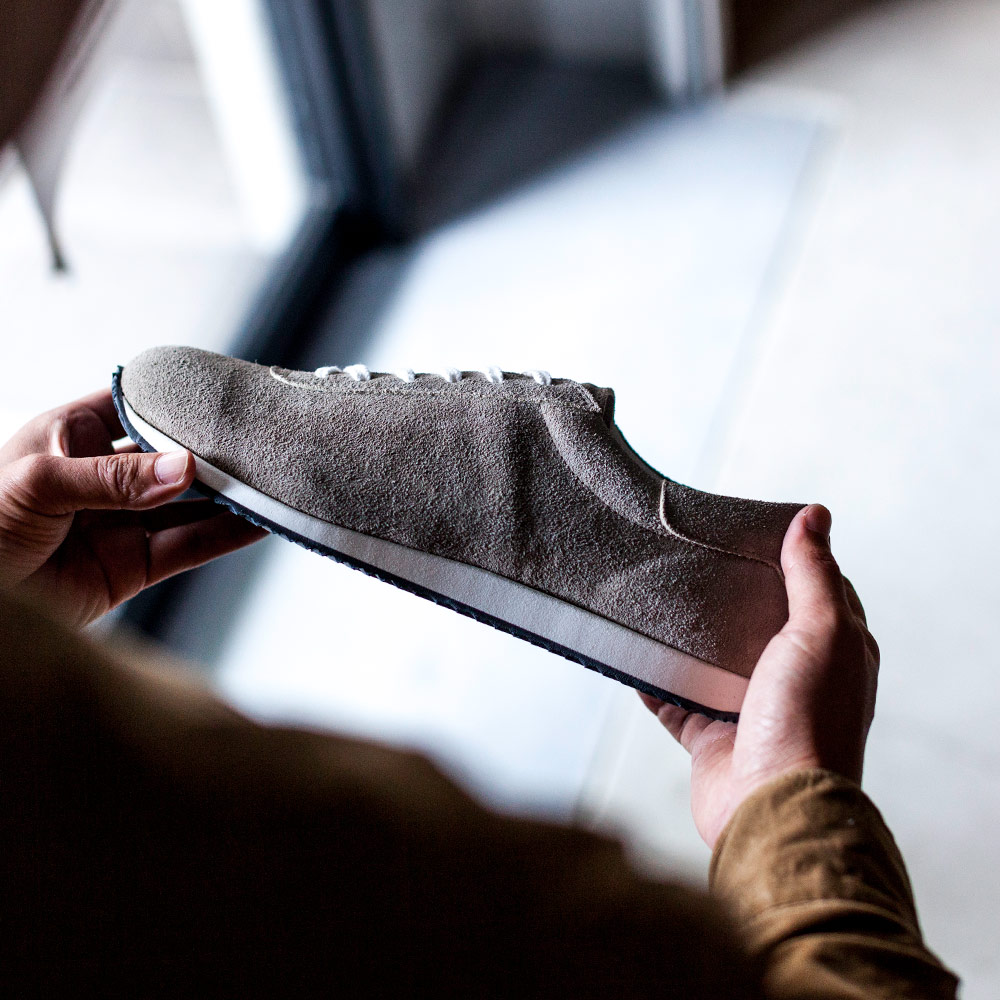
Egawa
I see! You're certainly right, it's not for us to judge whether something is folk art or not... In other words, I agree with Mr. Muneyoshi's definition of folk art, but Blue Over is not trying to be folk art.
Going back to the topic of "beauty" for a moment, how do you interpret Muneyoshi's philosophy?
Watari
"These tools are produced out of necessity by the people living in the local community. These tools make use of the local climate, and for the local people who live there, making these tools also exists as a 'job'. There is no fame or obscurity; they simply exist as a part of human activities as a matter of course. This cycle of relationships between people and things is very natural, healthy and beautiful!" That's how I interpret it, and I think that's great. I like the "healthy" part of "healthy beauty." I think it's wonderful to be both healthy and beautiful.
Egawa
The "wholesome beauty" that resides in Mingei refers not only to the appearance, but also to the beauty of the background that surrounds it. That's the interpretation. I think my own view of Mingei has changed a little.
Blue Over's simple, rounded appearance and the fact that it is made in Japan. And the word "Mingei". If you only look at those two points, it may seem as if they are promoting Mingei (laughs), but in fact, it's not just that. Although sympathy with Mr. Muneyoshi's idea of healthy beauty is a big factor, there are also many other things that I touched on in the previous article, such as doubts about the consumption cycle... Including the points I will explain and touch on later, the Blue Over brand contains many other outputs.
Beauty in daily life. I am strongly influenced by this idea, and I believe that even in modern society, it is important to design based on the local culture and cultivated techniques, so I try to avoid unnecessary design as much as possible. One of the activities of Blue Over is to ensure that the craftsmen (production areas) who can create such healthy beauty do not disappear.
Egawa
They try to avoid unnecessary designs as much as possible... so why does Blueover have no markings, unlike other brands based on mass production?
Watari
No mark does not mean anti-mass production, and I don't think it's unnecessary. Recently, there are many brands that have small marks.
Egawa
It's also increasing a lot among clothing brands.
Watari
I think that was the era when there were many designs with large marks on the sides.
Egawa
What was once a trend has now become established.
Watari
However, the reason why we don't have a big mark on the side of our shoes is because we thought that the brand name should not come first, but should remain anonymous. I think that this is a kind of declaration of intent that it is the nameless craftsmen who are creating our brand.
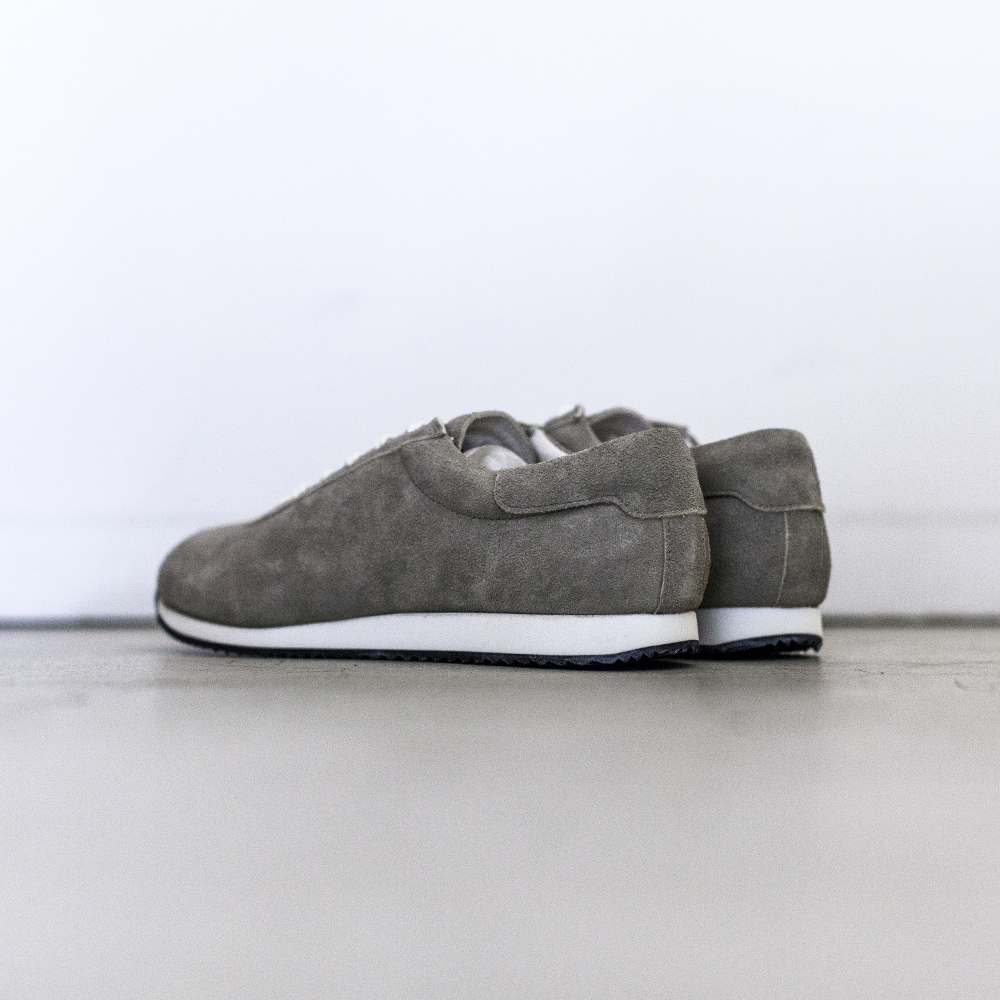
Egawa
Also, because it is relatively anonymous, the material and form of the piece stand out, making it a sight worth seeing.
Watari
That may be true. When I design, I start by thinking about the strengths of the factory I'm asking them to do the work. If I make the factory do something they're not familiar with with my design, it often ends up with unnecessary elements.
Egawa
When you say unnecessary elements... well, does that include things like the work processes of craftsmen?
Watari:That's true. On the other hand, if you incorporate the techniques that factories are good at into the design, it will turn out to be something very beautiful. The same can be said about materials.
Egawa
In other words, if you try to do something that is too difficult, it will end up being inefficient and unattractive. Blue Over tries to avoid doing anything too difficult, making use of the strengths of the factory, and seeing the shape that comes out naturally and honestly. I think that is certainly reflected in the final product.
This time, I read through the section on "influences from the Mingei movement" in the concept statement with Watari, the designer of Blue Over and the author of the concept statement.
He encountered the "Mingei" (folk art) advocated by his father, Muneyoshi, and was deeply influenced by its primitive and pure ideas.
We continue to work to preserve the places and people who can create "wholesome beauty" while sympathizing with folk art.
In the next issue, we will continue to analyze the design practices of Blueover.


